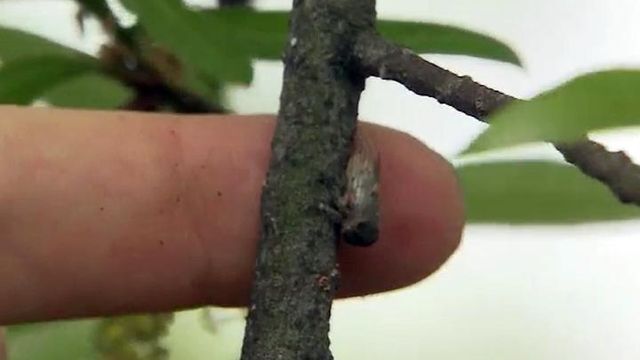Hot spots in Raleigh not good for area trees
Research by a North Carolina State University graduate student has pinpointed Raleigh's hottest locations, and she says they could be problematic for some area trees.
Posted — UpdatedEmily Meineke, who is studying entomology, is examining the effect of temperatures on scale insects, parasites that feed on trees and plants. She placed small thermometers in trees throughout Raleigh and used their readings to produce a map of so-called "heat islands," areas that stayed warmer longer.
Meineke said roads, parking lots and buildings "trap heat during the day and release that heat during the night time," producing the heat islands. The temperature differences can be huge, she said.
"In some places, the air temperature is about 10 degrees hotter," she said.
The heat islands are helping the scale insects survive and thrive on local willow oak trees.
"Scale insects produce a lot of babies, and those babies survive at a certain rate, and they survive at a higher rate when it's warmer," she said.
More insects present a threat to trees in Raleigh, especially younger ones, which Meineke said could eventually create problems for local residents.
"Trees are one of the only ways that we get clean water and clean air," she said.
The problem could spread to trees in rural areas and forests as the overall climate warms, she said.
• Credits
Copyright 2024 by Capitol Broadcasting Company. All rights reserved. This material may not be published, broadcast, rewritten or redistributed.





